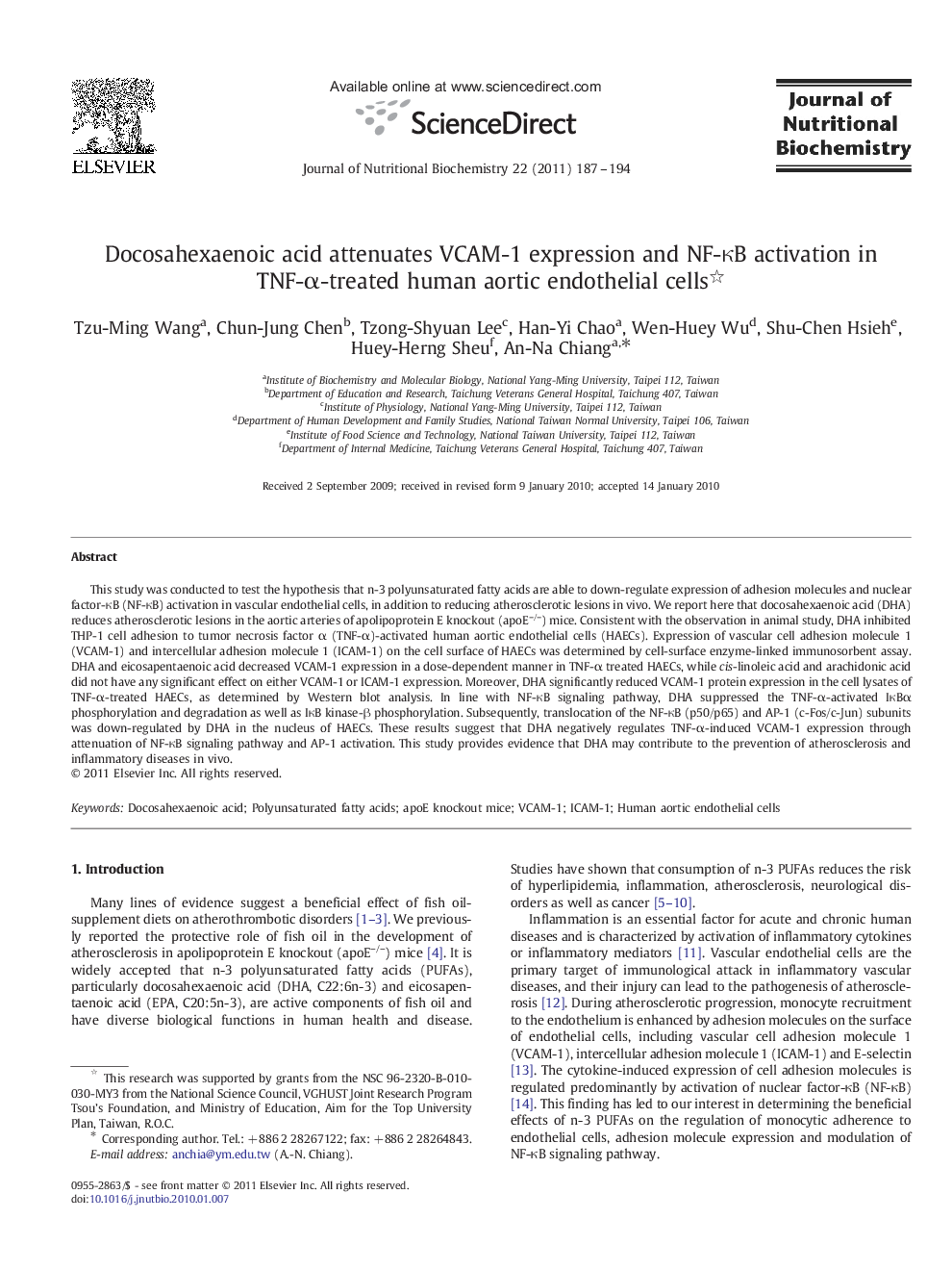| Article ID | Journal | Published Year | Pages | File Type |
|---|---|---|---|---|
| 1990703 | The Journal of Nutritional Biochemistry | 2011 | 8 Pages |
This study was conducted to test the hypothesis that n-3 polyunsaturated fatty acids are able to down-regulate expression of adhesion molecules and nuclear factor-κB (NF-κB) activation in vascular endothelial cells, in addition to reducing atherosclerotic lesions in vivo. We report here that docosahexaenoic acid (DHA) reduces atherosclerotic lesions in the aortic arteries of apolipoprotein E knockout (apoE–/–) mice. Consistent with the observation in animal study, DHA inhibited THP-1 cell adhesion to tumor necrosis factor α (TNF-α)-activated human aortic endothelial cells (HAECs). Expression of vascular cell adhesion molecule 1 (VCAM-1) and intercellular adhesion molecule 1 (ICAM-1) on the cell surface of HAECs was determined by cell-surface enzyme-linked immunosorbent assay. DHA and eicosapentaenoic acid decreased VCAM-1 expression in a dose-dependent manner in TNF-α treated HAECs, while cis-linoleic acid and arachidonic acid did not have any significant effect on either VCAM-1 or ICAM-1 expression. Moreover, DHA significantly reduced VCAM-1 protein expression in the cell lysates of TNF-α-treated HAECs, as determined by Western blot analysis. In line with NF-κB signaling pathway, DHA suppressed the TNF-α-activated IκBα phosphorylation and degradation as well as IκB kinase-β phosphorylation. Subsequently, translocation of the NF-κB (p50/p65) and AP-1 (c-Fos/c-Jun) subunits was down-regulated by DHA in the nucleus of HAECs. These results suggest that DHA negatively regulates TNF-α-induced VCAM-1 expression through attenuation of NF-κB signaling pathway and AP-1 activation. This study provides evidence that DHA may contribute to the prevention of atherosclerosis and inflammatory diseases in vivo.
